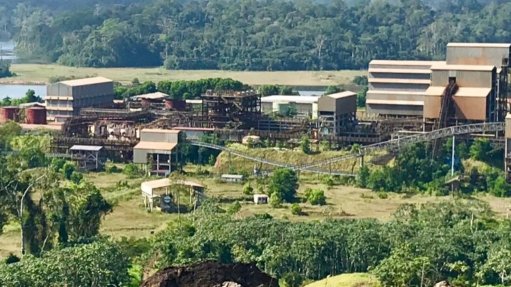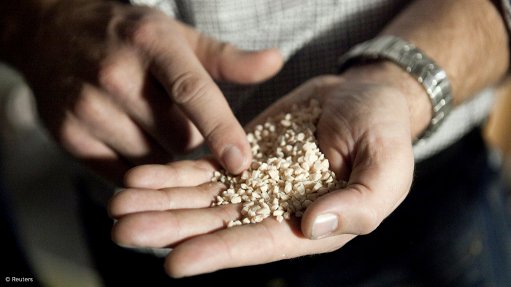Pump systems optimised through energy-saving assessments
With international studies showing that pump systems account for more than 20% of global electrical energy demand, one of the project offerings of the National Cleaner Production Centre South Africa (NCPC-SA) under its flagship Industrial Energy Efficiency Project which has fervently been taken up by large energy users is pump system optimisation, with the organisation having worked with more than 450 companies during the past decade.
Pumps comprise a large and integral part of almost every subsector of industry in South Africa and, therefore, provide great opportunity for energy savings, according to the NCPC-SA.
“The benefits and savings potential of a systems approach almost always outweighs those of a component approach. Instead of simply upgrading the motor to a higher efficiency unit, one should consider the entire system holistically. In addition to the pump and electric motor, other inter-related elements include the piping distribution network, flow-control devices and most importantly the actual process requirements the pump system needs to achieve,” says NCPC-SA energy expert Milisha Pillay.
Following this approach enhances the efficiency of the entire pump system, from ‘wire to water’, she tells Engineering News.
Through scoping and detailed assessments carried out on pump systems at South African companies, the NCPC-SA has identified significant energy-saving opportunities through system optimisations.
“A scoping assessment is usually conducted prior to a detailed assessment to assist in obtaining a representative picture of a plant’s operations and various pumping systems in terms of energy consumption. It is also used to earmark the pump systems that show good potential for improvement or those systems that require further investigation.”
A detailed assessment by contrast, employs a more focused approach and would involve detailed data collection and analysis to quantify potential savings.
Any pump systems that were identified as good energy-saving candidates during the scoping assessment are investigated in detail, she adds.
“Data is logged in the field using specialised equipment, and used to determine the operating characteristic of the pumping system. This requires an analysis of the pump’s performance in relation to the system in which it operates. Defining the operating point is pertinent to understanding the pump in terms of its best performance (best efficiency point). Moreover, it provides the opportunity to evaluate whether the pump can operate more efficiently whilst still meeting the process requirements of the system.”
In a recent undertaking by the NCPC-SA, a PSO scoping assessment was conducted at a manufacturing plant of one of the largest global companies in the iron and steel sector. The assessment collectively identified potential savings of more than R13.5-million across four of the company’s sub-plants, Pillay notes.
“This equates to just under 13 000 t of carbon emissions mitigated. About 30% of these savings could be realised almost immediately with little to no capital costs.”
A detailed assessment was also carried out recently on a crude oil pipeline for a large energy user with nationwide operations.
Real-time data across 11 pump stations and two provinces was collected, while proprietary software of a pump systems specialist was used to evaluate individual pump performance and overall system efficiency. This analysis combined with the specialists’ on-site observations was used to identify improvement opportunities.
About R30-million of savings were identified during the detailed assessment, of which about 40% could be easily achieved with relatively simple changes to control philosophies and pump combinations.
“There is no one-size-fits-all solution in terms of system optimisation. The solution is based upon understanding the pump system design, the current operating conditions and environment, the maintenance history of the pump, as well as the supply, distribution and end-use of the system,” states Pillay.
She adds that two commonly encountered opportunities for improvement are the use of mechanical flow restriction devices and sub-optimal pump configurations when using multiple pumps. Using the systems approach allows for the most optimal solution to be identified.
Firstly, the use of throttle valves as a flow control device should be reduced or eliminated altogether, as this is a major contributor to the loss of efficiency in a process where flow requirements vary. This is achieved through reducing the impeller diameter or the installation of a variable speed drive (VSD).
Secondly, the control strategy for multiple pump combinations can often be optimised. This can vary from trimming impellers to resizing pumps or in some cases even switching off one or more pumps.
“The NCPC-SA assessments are carried out by organisation body United Nations Industrial Development Organisation certified experts who have received theoretical and practical training in pump systems optimisation,” concludes Pillay.
Article Enquiry
Email Article
Save Article
Feedback
To advertise email advertising@creamermedia.co.za or click here
Announcements
What's On
Subscribe to improve your user experience...
Option 1 (equivalent of R125 a month):
Receive a weekly copy of Creamer Media's Engineering News & Mining Weekly magazine
(print copy for those in South Africa and e-magazine for those outside of South Africa)
Receive daily email newsletters
Access to full search results
Access archive of magazine back copies
Access to Projects in Progress
Access to ONE Research Report of your choice in PDF format
Option 2 (equivalent of R375 a month):
All benefits from Option 1
PLUS
Access to Creamer Media's Research Channel Africa for ALL Research Reports, in PDF format, on various industrial and mining sectors
including Electricity; Water; Energy Transition; Hydrogen; Roads, Rail and Ports; Coal; Gold; Platinum; Battery Metals; etc.
Already a subscriber?
Forgotten your password?
Receive weekly copy of Creamer Media's Engineering News & Mining Weekly magazine (print copy for those in South Africa and e-magazine for those outside of South Africa)
➕
Recieve daily email newsletters
➕
Access to full search results
➕
Access archive of magazine back copies
➕
Access to Projects in Progress
➕
Access to ONE Research Report of your choice in PDF format
RESEARCH CHANNEL AFRICA
R4500 (equivalent of R375 a month)
SUBSCRIBEAll benefits from Option 1
➕
Access to Creamer Media's Research Channel Africa for ALL Research Reports on various industrial and mining sectors, in PDF format, including on:
Electricity
➕
Water
➕
Energy Transition
➕
Hydrogen
➕
Roads, Rail and Ports
➕
Coal
➕
Gold
➕
Platinum
➕
Battery Metals
➕
etc.
Receive all benefits from Option 1 or Option 2 delivered to numerous people at your company
➕
Multiple User names and Passwords for simultaneous log-ins
➕
Intranet integration access to all in your organisation
















